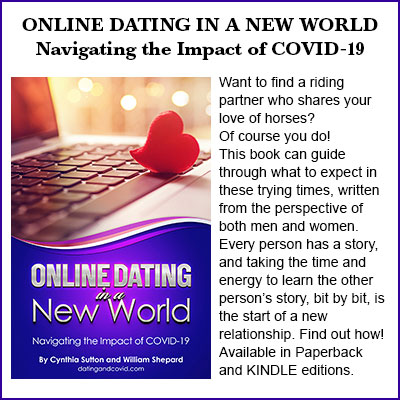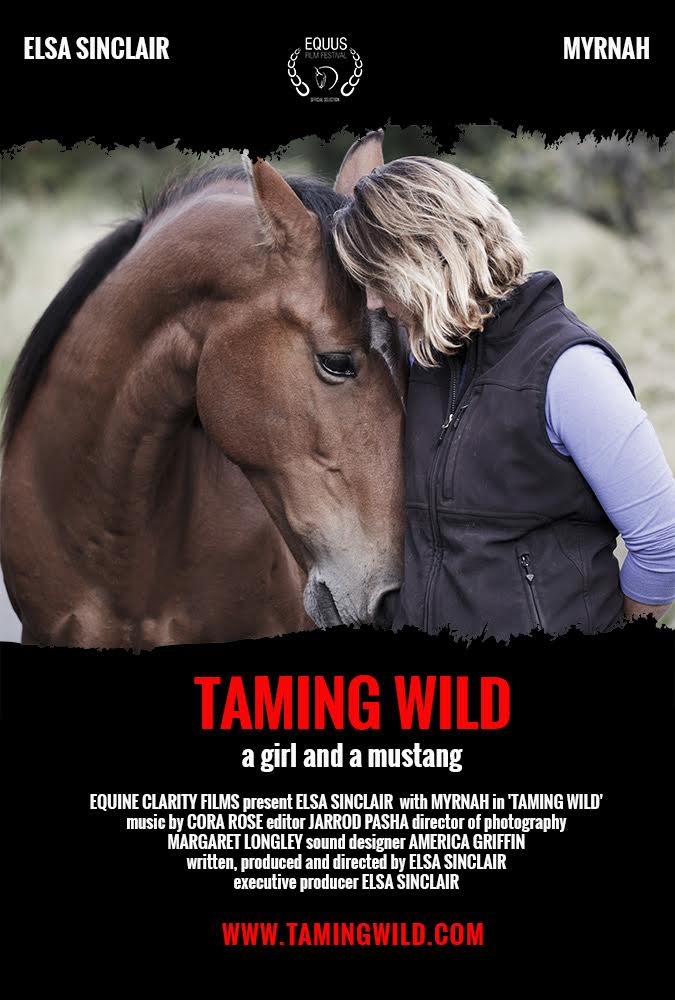
"What if horses were given a choice? Would they let us ride them?”
The touching story of horse trainer Elsa Sinclair is told in her movie "Taming Wild" where she traveled to find an untouched Mustang, a mare which was totally wild, and patiently created a bond with her. Elsa used no saddles, no bridles, no whips, and no food for bribes to see if a wild horse would choose to be ridden. Elsa speaks with Equine Info Exchange and shares her remarkable journey of respect, patience and love with her Mustang mare named Myrnah.
EIE: Your project started with a question. "What if horses were given a choice? Would they let us ride them?" What prompted this question and inspired you to create a film?
ES: The question actually came from a student of mine and my first answer was: "of course, horses love being ridden… And then my student pushed me a little harder and I realized, I didn’t really have any way of knowing that. I wasn’t sure a horse ever had been asked how they felt about being ridden in a way where they had freedom to give a real answer. So, I started doing some research and while I found lots of training methods based on positive reinforcement and food rewards, I found only one person who had even tried to find out what training looked like without either force or bribe. Carolyn Resnick in her book "Naked Liberty" talks about training in freedom, but ultimately had only her personal story documented, she had no pictures or video of the process itself. I thought someone should do this process and document it. I went around telling everyone this for a while, and then when no one else volunteered to do it… I figured it was up to me.
Once I had decided I was going to do this, a dear friend of mine who is a videographer, told me if I was going to do the project we really should film it right and go beyond the "tripod set up in the corner" idea I was planning. Thank goodness for Margaret Longley and beautiful work that ultimately made the movie "Taming Wild" possible. I am so very grateful to her skill and consistency and friendship throughout.
EIE: Tell us a bit about your background with horses.
ES: My background with horses started with my Mother who loved them, taught me the basics of what I needed to know, and then took off galloping through the woods with me trailing along behind on my pony on a regular basis. As I grew up, my mother taught all my friends to ride, rescued horses in need and fostered an amazing community of riders and horses on a shoe string budget in an open pasture with the bare necessities of what we needed and nothing extra. It was an ideal way to grow up.
When I was sixteen I got my GED and left school to travel around the country as a working student with so many horse trainers who I am forever indebted to for giving me the skills I ultimately needed. The project of “Taming Wild” was not a reinvention of the wheel, it was just a refining and developing of skills with horses, hard won over billions of hours under the tutelage of very good teachers. Hopefully now I can pass that on to the next generation in a way that is a little more refined and developed than the way I had to learn.
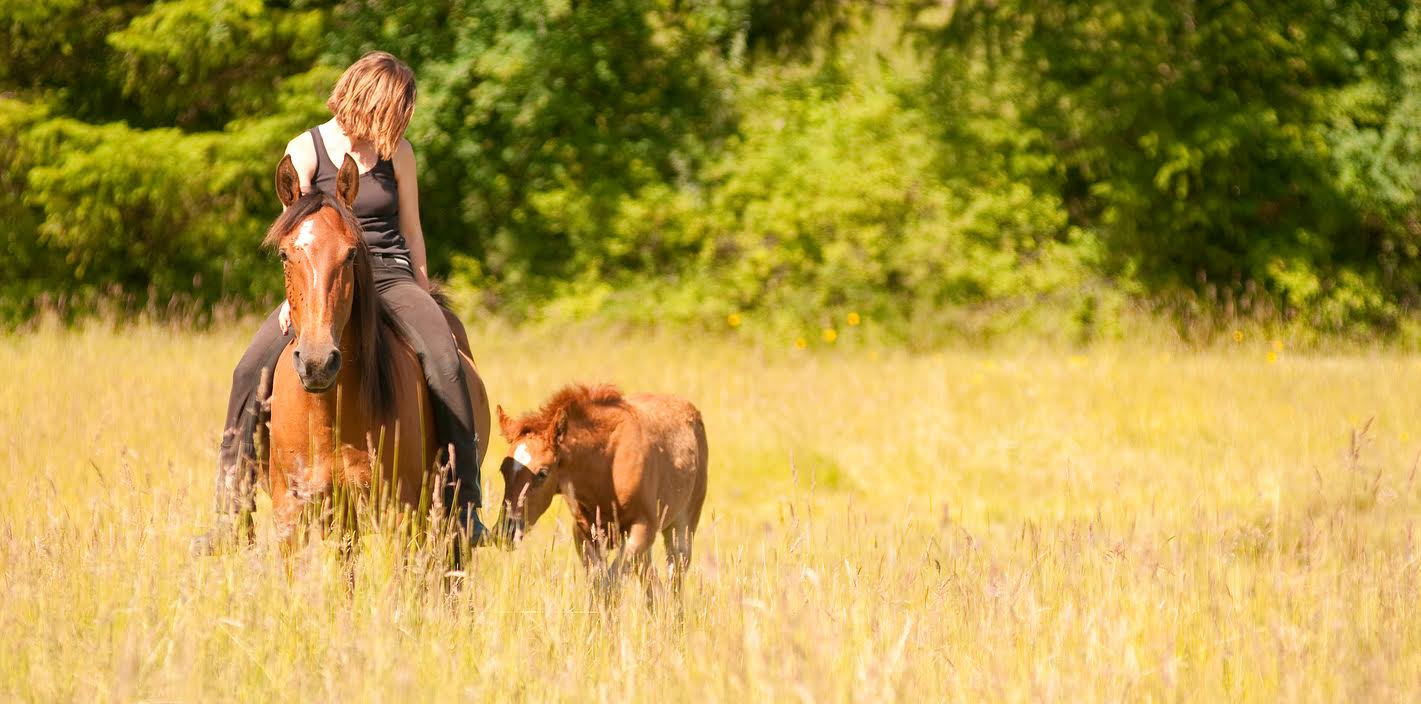
EIE: As the subject for your film, you wanted to select a horse that was previously untouched by human hand - a Mustang. Let us know the process of adopting one. Tell us where you went and whom you contacted in order to adopt a Mustang.
ES: I chose a mostly untouched Mustang as the subject for my film, because I wanted the horse to know it had a choice to work with me or not from the very start. The BLM in Oregon was very supportive in helping me get my film underway. Normally there are several hundred horses at the holding corrals in Burns, OR that are available for adoption at any time. I wanted one fairly newly rounded up, so I was in contact with the management and they let me know when the latest gather was happening so I could be there when they were brought in. It is customary for there to be at least a 6 week hold on the horses before they go anywhere so the vaccines can all happen before they leave, but because of my project I got special leave to do the vaccines myself and leave with Myrnah within days of her coming off the range.
EIE: It was very interesting how you selected Myrnah. Tell us about how you chose her and selected her name.
ES: I was looking for a certain body type of horse I thought I liked, standing at the corral fence marking down numbers and weighing pros and cons of this horse and that… and then when I went back to the hotel room that first night and looked at the video footage, in every shot there was one mare with a lightning strike blaze on her forehead, looking right at me, and right at the camera. It was clear, if I was going to make a movie, I should really pick the horse that wanted to be a movie star. When she came through the chutes the next day it was determined she wasn’t nursing, so there was no foal to worry about, and her age was about 4, which was right what I was aiming for… and she was exactly the horse. I didn’t need to pick my horse, she picked me. We named her Myrnah, which means peace in some Russian dialects.
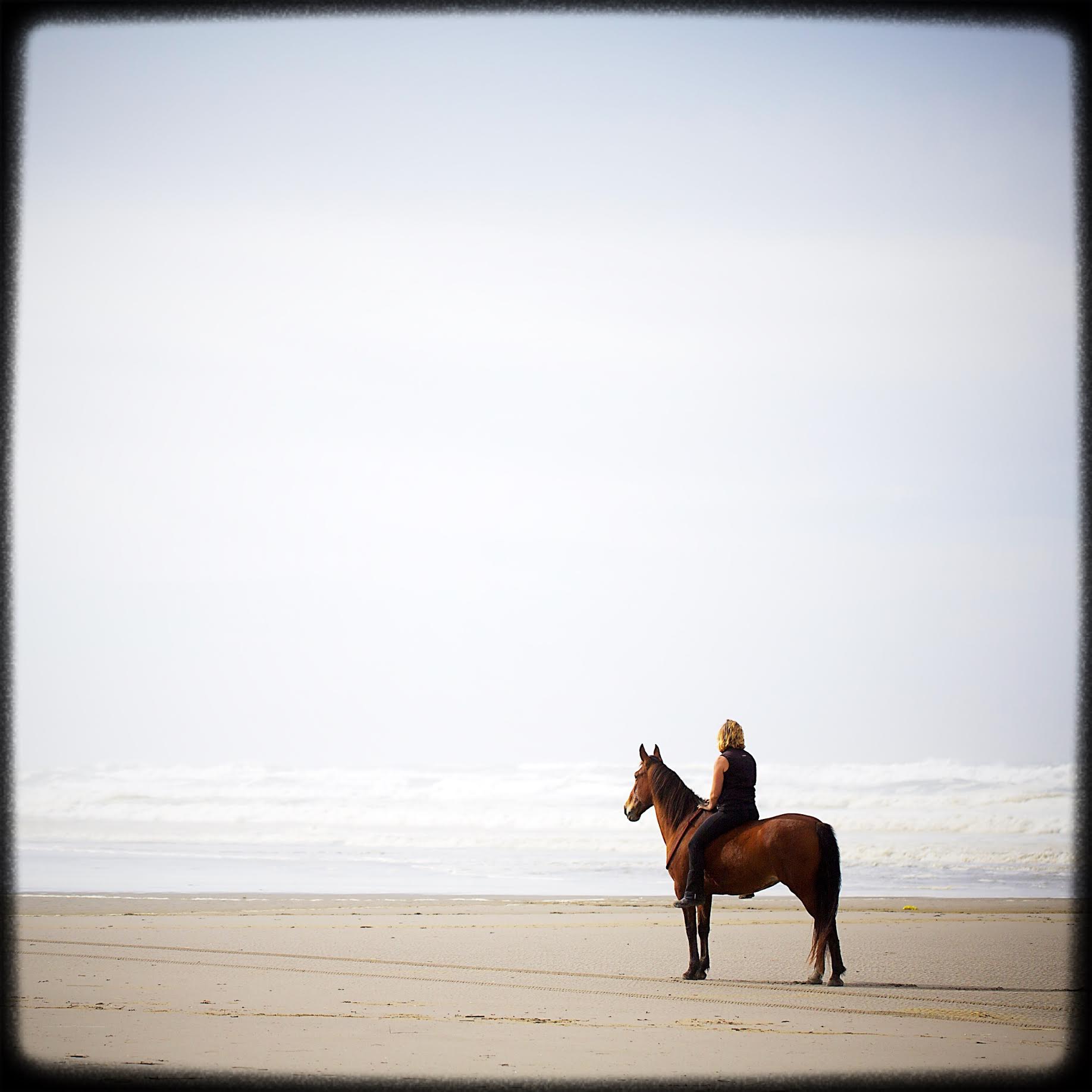
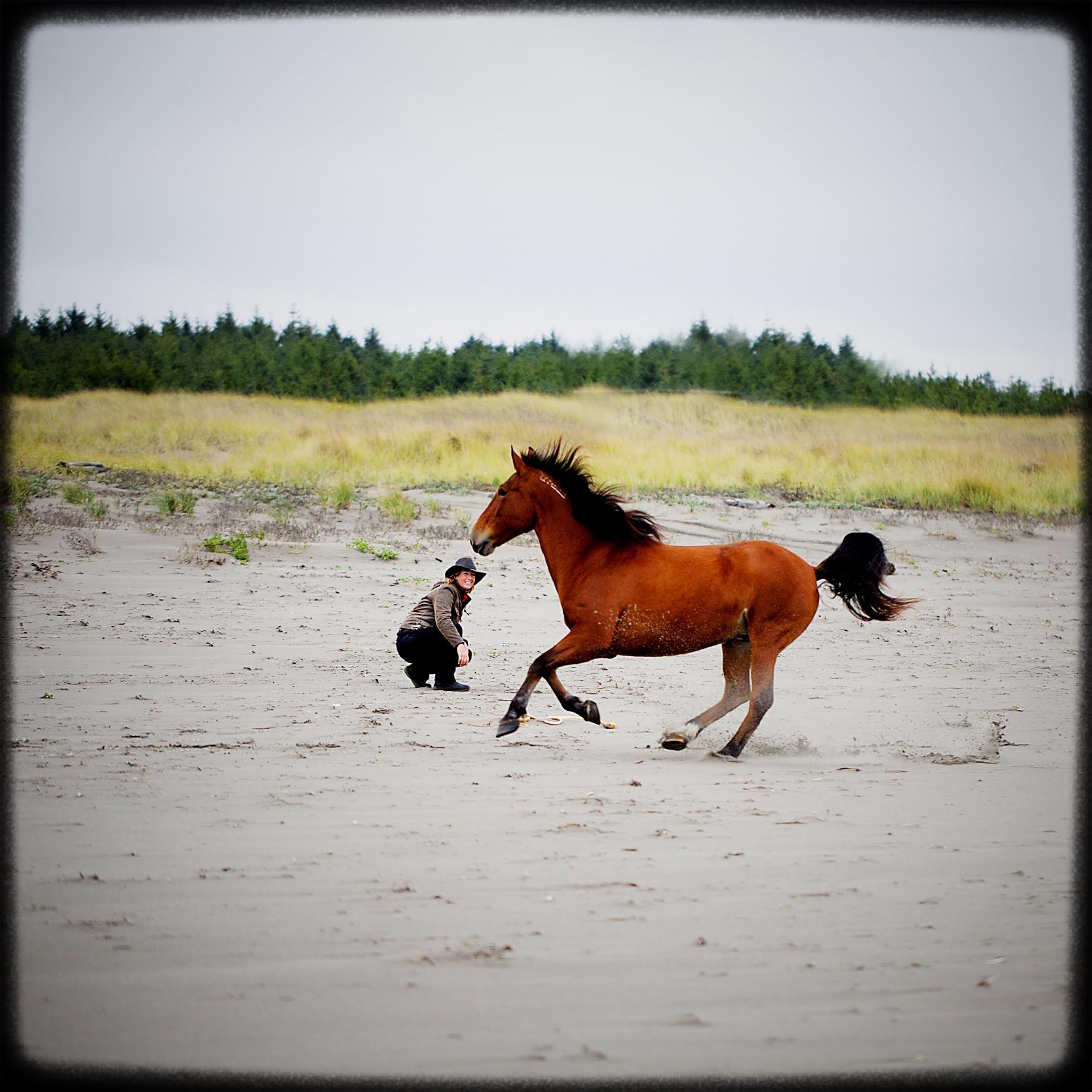
EIE: After adopting Myrnah - you later discovered a "surprise" ! Tell us about Myrnah's foal. What's he up to now?
ES: When you adopt a Mustang mare right off the range there is a high chance she is going to be pregnant. Throughout the first winter with Myrnah I really didn’t know. She was so skinny at first and then gained weight in fits and starts as the year went on. It wasn’t until spring that I really felt that baby start kicking, and then I knew this project was going to have three of us in it pretty soon. The colt was a joy to have around, and Myrnah was a brilliant mother. The colt now belongs to a student of mine and I get to see him every couple of weeks. He is such a great character and I just love how he is growing up.
EIE: You had a friend who traveled with you and also adopted a horse at the same time you adopted Myrnah. What is her name and how is she doing now?
ES: When I adopted Myrnah a friend came with us and adopted another four year old mustang mare he named Cleopatra. The goal was to let the two wild ones live together for company the first few months until they could go out with the larger herd. When you first get mustangs it is required you keep them in an enclosure with six foot high fences until you are positive you can catch them. After her time at my house, Cleo was headed for a career in Endurance Racing, however due to a quarter crack we didn’t see when we picked her out, that didn’t end up being a good plan for her. I ended up falling madly in love with Cleo and to this day still lives with Myrnah and me.
EIE: Through your film, you were able to educate viewers about the challenges of horses living in the wild. Was this part of the plan or did you discover more during your journey and was able to convey it during your film?
ES: Learning about wild horses and their challenges is an ongoing process. I would love to inspire people to learn more and help however they can. The American Mustang is an incredible part of our heritage, and I hope will be part of the American west forever. As a breed, I have never met a better partner and riding horse than my Mustangs have proven to be, and part of that are the skills they gain from the life they lived out free before they ever met me. I hope as people we can learn to manage Mustangs in a way that is healthy for the land and the horses and the people who all share in this. Wild lands, wild animals, wildness in general is something we need to value and maintain in this world, as best we can.
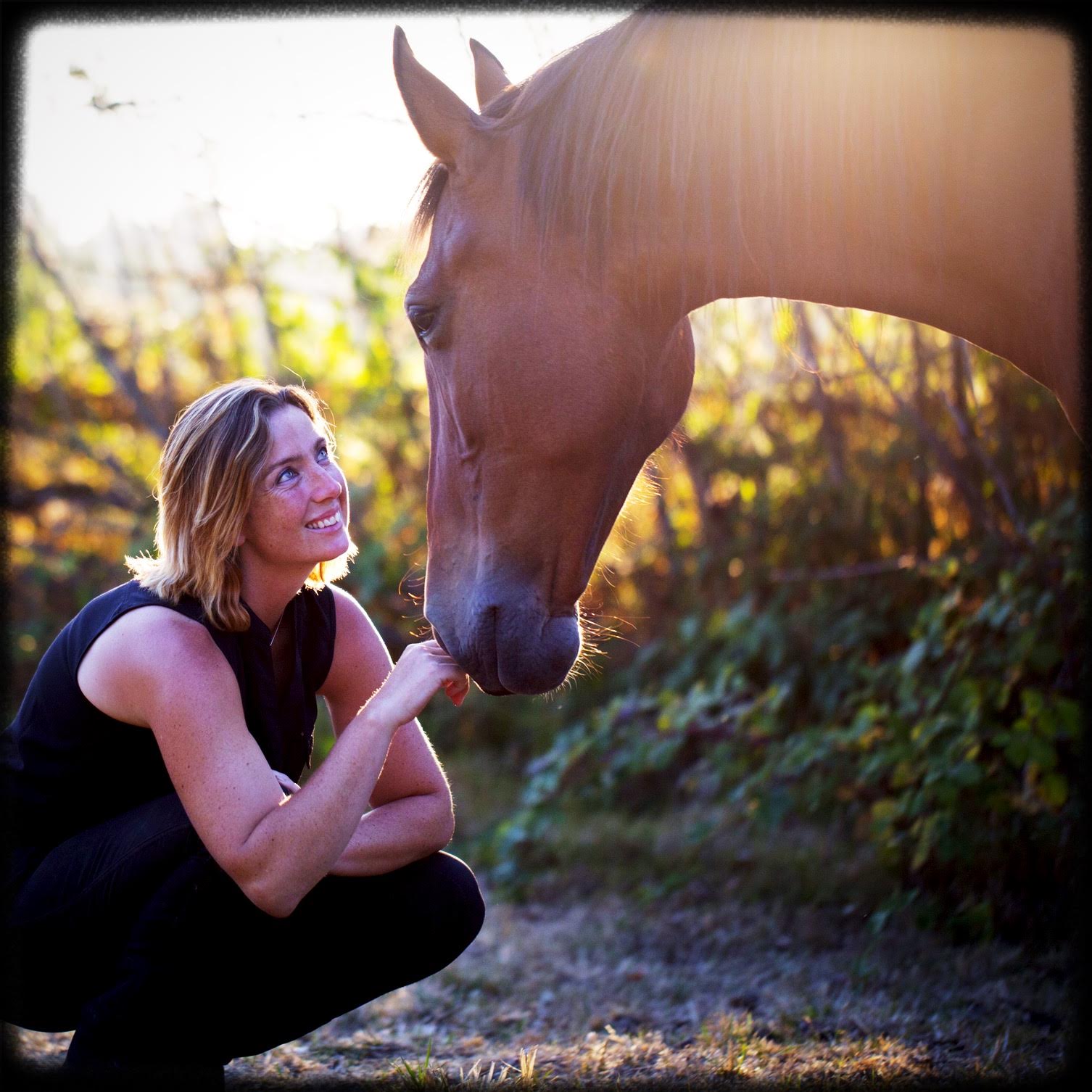
EIE: Was the journey different than you envisioned and did your project end up resulting in the goal you hoped?
ES: The journey in the film “Taming Wild” follows was very much how I envisioned it in the highlights of how it started and how it ended. However in the days between, I have to admit, I had no idea how challenging it would be, how many long hours it would entail, how often I would have to admit I really didn’t know what I was doing or if it was even possible. I learned more in that year with Myrnah than I have learned in the whole rest of my life combined. There was no way to know that beforehand, it had to be lived to be understood.
EIE: As a result of the film, have people asked you to train their horse in a similar way?
ES: Yes, I have had many, many people who wanted to learn this for themselves. There is a weekly blog for inspiration at EquineClarity.org and there is a book in the works due to be finished in 2016. There is also an online course being developed for the fall of 2016.
In my day to day training, I use and teach pieces of what I developed, and that is incredibly powerful and valuable. There is no one yet who has wanted to do the process in its entirety, not even me again, yet. It really is more personally challenging than most people are ready for. I think it’s only a matter of time, however, before it becomes a hallmark of a good trainer to have done it at least once. A full year of no force and no bribes… just relationship skills between horse and rider. Life itself is the best teacher out there.
EIE: Your film debuted at the Equus Film Festival in New York and was recently shown to sold out theaters in Seattle. What is your distribution plan going forward and how can people see your film?
ES: “Taming Wild” debuted at the Equus Film Festival in New York City and then also had an amazing reception at its home city premieres in Seattle. It will continue its screenings around the world at film festivals, and educational seminars. Denmark, Germany, Australia, New Zealand, and Rome have dates scheduled with lots more in the works. It will also be available to purchase on the website TamingWild.com.
Biography: Elsa Sinclair is a professional horse trainer and instructor who brings to the horse world a unique and powerful perspective. Gathering together awareness from a variety of equine disciplines, Elsa has an enthusiasm for discovering and developing what it takes for both sides of a human ~ equine partnership to fully enjoy the process of learning and growing in the direction of their goals.
Elsa got her first pony at the age of seven. From then on, it was a constantly evolving love affair with her and the horses. One naughty pony after the next, Elsa was shown the ropes and taught what it was to work together with the horses (or not as sometime the case seemed) toward common goals.
Childhood life took her through a meandering journey of Pony Club, trail rides, dressage and jumping lessons; through teaching and helping misunderstood horses and the wonderful and determined people who desired to become partners with them.
Early teenage years led Elsa to focus on her passion for theatre and dance, and let horses take a more secondary role. Only later would she realize how beneficial that study would prove to be, in terms of being aware of the body in space and how it interacts and relates with others.
At the age of sixteen Elsa recommitted to the world of horses. An intense study of French Classical Dressage with Dominique Barbier in Northern California was followed by a period of more informal, but no less intense, study of endurance racing in Southern California. Following that was a period of work-study in Georgia learning Equine Tellington Touch, Equine Awareness method and Centered Riding.
Having achieved her level one instructor status for Centered Riding. Elsa returned to San Juan Island and ran a trail riding business for a summer.
The following year Elsa moved to Pennsylvania to be a groom at a Three Day Event barn and continue her studies with an international Centered Riding instructor.
At the age of twenty-one Elsa again returned to San Juan Island and began fulltime teaching of Centered Riding and studied novice level eventing with her own horses.
At twenty-five Elsa was drawn into the world of Horse psychology and Natural Horsemanship. All sixteen horses in the cooperative that Elsa worked with had their shoes pulled and their bridles exchanged for rope halters, and thus an extraordinary journey of understanding life from the horse's perspective began.
The following years saw Elsa pass her Level Three Parelli assessment test, perform with her Level Three horse at a Parelli tour stop, develop a bridleless polocrosse team with her fellow Parelli students, rehabilitate a Thoroughbred off the track, and adopt a five year old mustang straight off the Nevada range.
In 2007 Elsa moved to Europe and took a brief sabbatical to be with her family. Luckily for everyone, after six months they moved again, back home to San Juan where Elsa has picked up where she left off, coming into her work again with a renewed passion and clarity.
All Elsa's experiences through the years and various equine disciplines come together now in a synergistic whole, giving Elsa a broad platform from which to teach.
Elsa teaches and trains in both Centered Riding and Natural Horsemanship to help people achieve their goals, in whatever discipline they choose to enjoy with their horse.






